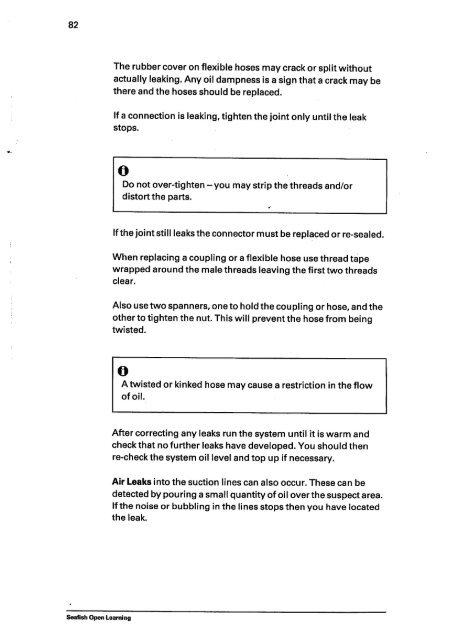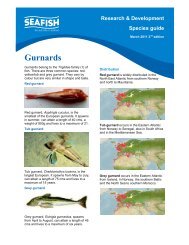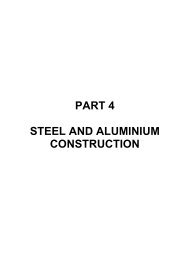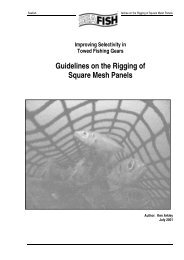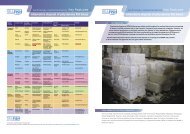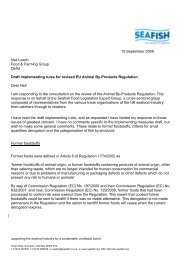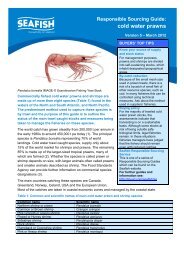Hydraulics - Seafish
Hydraulics - Seafish
Hydraulics - Seafish
Create successful ePaper yourself
Turn your PDF publications into a flip-book with our unique Google optimized e-Paper software.
82<br />
The rubber cover on flexible hoses may crack or split without<br />
actually leaking. Any oil dampness is a sign that a crack may be<br />
there and the hoses should be replaced.<br />
If a connection is leaking, tighten the joint only until the leak<br />
stops.<br />
o<br />
Do not over-tighten -you may strip the threads and/or<br />
distort the parts.<br />
If the joint still leaks the connector must be replaced or re-sealed.<br />
When replacing a coupling or a flexible hose use thread tape<br />
wrapped around the male threads leaving the first two threads<br />
clear.<br />
Also use two spanners, one to hold the coupling or hose, and the<br />
other to tighten the nut. This will prevent the hose from being<br />
twisted.<br />
o<br />
A twisted or kinked hose may cause a restriction in the flow<br />
of oil.<br />
After correcting any leaks run the system until it is warm and<br />
check that no further leaks have developed. You should then<br />
re-check the system oil level and top up if necessary.<br />
Air Leaks into the suction lines can also occur. These can be<br />
detected by pouring a small quantity of oil overthe suspect area.<br />
If the noise or bubbling in the lines stops then you have located<br />
the leak.<br />
<strong>Seafish</strong> Open Learning


